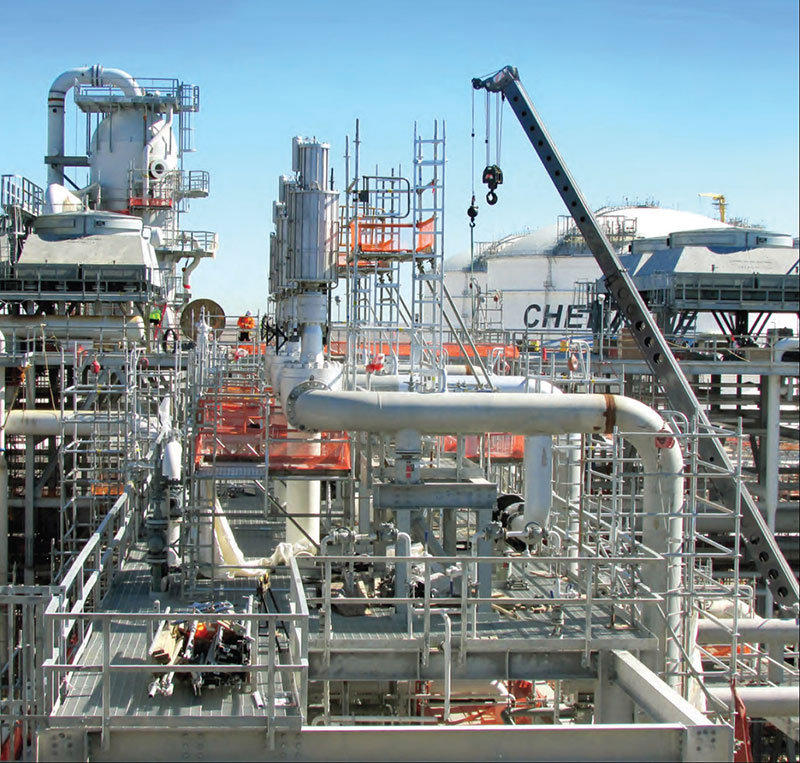Cheniere's Reduced Output Leads to Decline in U.S. LNG Demand
(Reuters) — There was a significant decline on Tuesday in the amount of U.S. natural gas being liquefied for export with a drop in demand from Cheniere Energy's Corpus Christi plant in Texas and its Sabine Pass operation in Louisiana, according to data from financial firm LSEG.
Cheniere is the largest U.S. producer and the world's second largest exporter of liquefied natural gas (LNG) as well as the largest buyer of U.S. natural gas.
At Cheniere's Corpus Christi facility, gas demand on Tuesday was down by close to one billion cubic feet, to 3.95 Bcf from its regular 5 Bcf, and was down to 1.6 Bcf at its Sabine Pass plant, from the usual 2.2 Bcf.
Cheniere declined to comment.
The fall in demand follows flat U.S. LNG exports in March due to ongoing repair work at the country's second largest LNG facility, Freeport LNG.
Unless there is an emergency or planned maintenance, there is an incentive for all U.S. LNG producers to maximize output because the difference in price between the U.S. Henry Hub exchange price and the Dutch TTF and the Japanese-Korean JKM benchmark prices make it lucrative to export as much U.S. LNG as possible, said Ira Joseph, a Senior Research Scholar at Columbia University's Center for Energy Policy.
"From a pricing perspective, TTF and JKM are well above $8 per million British thermal unit (MMBtu) and Henry Hub is still below $2, so even though I haven't had a good looked at the forward curve, I assume it is still in favor of maximizing exports," Joseph told Reuters.
He expects that Europe will remain the main market for U.S. gas even as some of the gas may have to go into storage because of declining demand at the end of the Northern Hemisphere winter.
Analysts do not expect U.S. LNG feedgas to return to record levels until liquefaction trains undergoing maintenance at Freeport LNG's export plant in Texas return to service.
On a daily basis, LNG feedgas fell to a 10-week low of 11.3 Bcf/d on Tuesday.
Gas flows to the seven big U.S. LNG export plants fell to an average of 11.9 Bcf/d so far in April, down from 13.1 Bcf/d in March. That compares with a monthly record of 14.7 Bcf/d in December.
Related News
Related News

- Intensity, Rainbow Energy to Build 344-Mile Gas Pipeline Across North Dakota
- Energy Transfer to Build $5.3 Billion Permian Gas Pipeline to Supply Southwest
- Enbridge Sees High Demand to Expand 593-Mile Canada-to-U.S. Gulf Oil Pipeline
- Strike Pioneers First-of-Its-Kind Pipe-in-Pipe Installation on Gulf Coast with Enbridge
- 208-Mile Mississippi-to-Alabama Gas Pipeline Moves Into FERC Review
- A Systematic Approach To Ensuring Pipeline Integrity
- 275-Mile Texas-to-Oklahoma Gas Pipeline Enters Open Season
- LNG Canada Start-Up Fails to Lift Gas Prices Amid Supply Glut
- Strike Pioneers First-of-Its-Kind Pipe-in-Pipe Installation on Gulf Coast with Enbridge
- Enbridge Sees High Demand to Expand 593-Mile Canada-to-U.S. Gulf Oil Pipeline





Comments